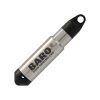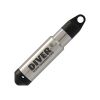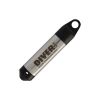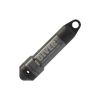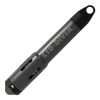Van Essen Diver-Link Cellular Telemetry System
The Van Essen Diver-Link cellular telemetry system is durable and easy to install with AT&T/T-Mobile networks that can be used in a variety of borehole locations such as flush mount and stick-up wells.
Features
- Automatic barometric compensation: no post processing of data
- 5+ years of battery life
- Compatible with all Diver data loggers and cables
- Free ground shipping
- Expedited repair and warranty service
- Lifetime technical support
- More
Overview
The Van Essen Diver-Link is a telemetry unit that is part of Diver-NETZ, a complete remote monitoring system that integrates field instrumentation with wireless communication and data management to effectively manage (ground)water resources. The Van Essen Diver-Link is suitable for continuous long- and short-term monitoring projects.
Durable
The Van Essen Diver-Link is a durable and easy to install telemetry unit that can be used in a variety of borehole locations such as flush mount and stick-up wells. The Diver-Link transmits data from a Diver data logger over a cellular network. Easily integrate the Diver-Link into the Diver-HUB web portal for real-time management of site data, monitoring equipment and water levels.
Compact Design
The Diver-Link combines a compact design with the latest 4G/LTE wireless technology. Configuration and management of the unit is easily done through the Diver-HUB web portal. Deployment of the Diver-Link simply consists of inserting the battery and connecting the unit to a Diver. In the field, the Diver-Link can be operated through Bluetooth Smart or using the magnetic function keys to activate the unit. Future firmware updates are automatically executed ‘over-the-air’, so there is no need for additional site visits.
In The News
From Paddles to Phytoplankton: Studying Vermont’s Wildest Lakes
For six months of the year, Rachel Cray, a third-year PhD student at the Vermont Limnology Laboratory at the University of Vermont, lives between a microscope and her laptop, running data. For the other six months, she is hiking and canoeing four of Vermont’s lakes, collecting bi-weekly water samples. Cray studies algal phenology across four lakes in Vermont, US, that have low anthropogenic stress—or in other words, are very remote. Funded by the National Science Foundation Career Award to Dr. Mindy Morales, the lakes Cray researches part of the Vermont Sentinel Lakes Program, which studies 13 lakes in the area and, in turn, feeds into the Regional Monitoring Network, which operates in the Northeast and Midwest US.
Read MoreReimagining Water Filtration: How Monitoring and Science Enhance FloWater Filtration Systems
Over 50% of Americans think their tap water is unsafe , according to the Environmental Working Group (EWG). Other recent surveys have found that number to be as high as 70% of persons surveyed. Whether due to increased public awareness of water quality issues or confusion about how municipal water sources are regulated, there is a clear distrust of tap water in the United States. According to industry expert Rich Razgaitis, CEO and co-founder of the water purification company FloWater, this issue creates a damaging cycle. Razgaitis explained that the health and environmental problems associated with contaminated water aren’t the only issues. As people become increasingly aware that some tap water is unsafe, they resort to bottled water.
Read MoreMonitoring New Hampshire’s Aquatic Ecosystems: Continuous Data Collection in the Lamprey River Watershed
New Hampshire’s aquatic ecosystems provide a range of ecosystem services to the state and region. Resources and services like clean water, carbon storage, climate regulation, nutrient regulation, and opportunities for recreation all depend on New Hampshire’s aquatic ecosystems remaining healthy. Jody Potter, an analytical instrumentation scientist at the University of New Hampshire (UNH), is studying these aquatic ecosystems in hopes of developing an improved understanding of ecosystem services and their interactions with climate change, climate variability, and land use changes. [caption id="attachment_39799" align="alignnone" width="940"] Aquatic sensors in the Merrimack River in Bedford, NH, with I-293 in the background.
Read More



























